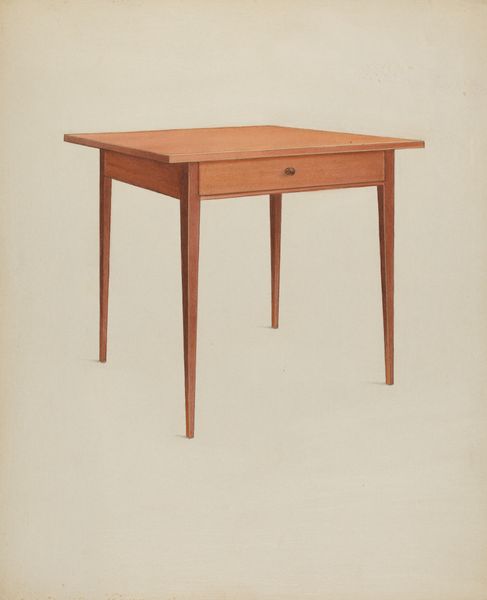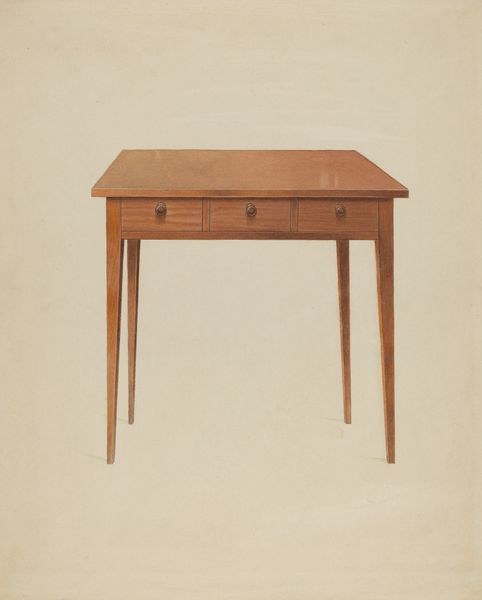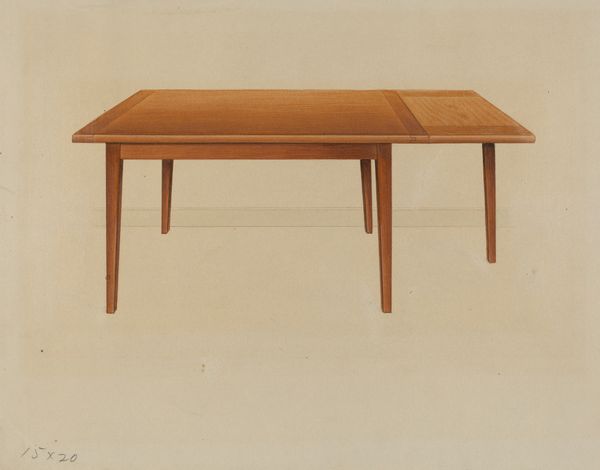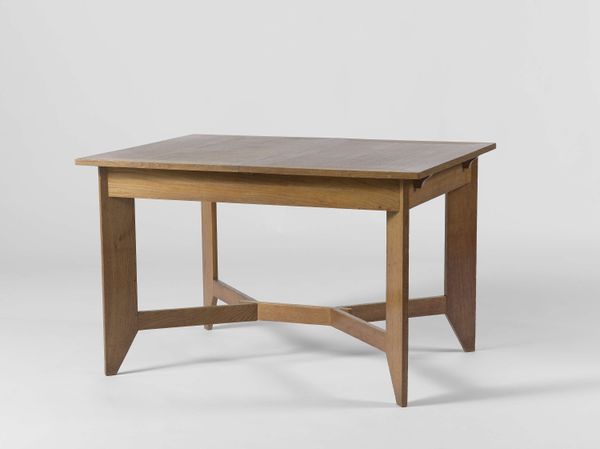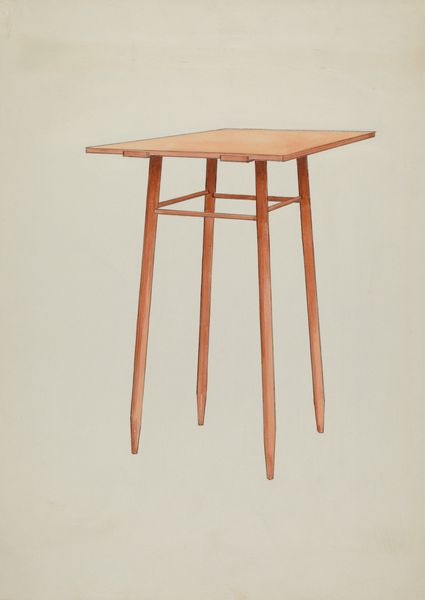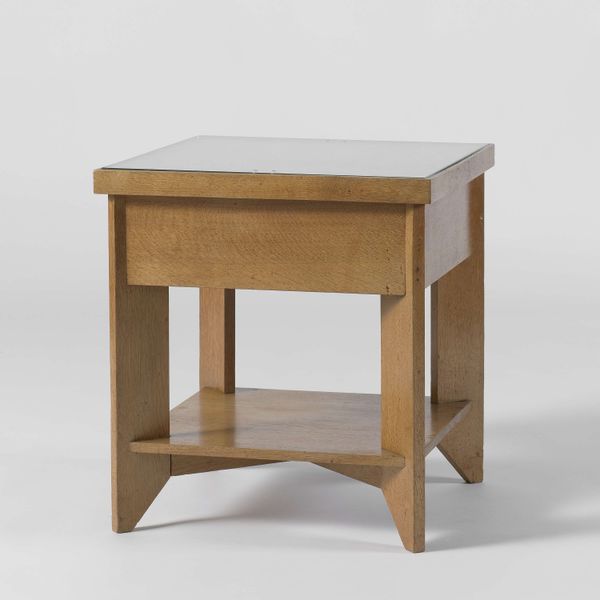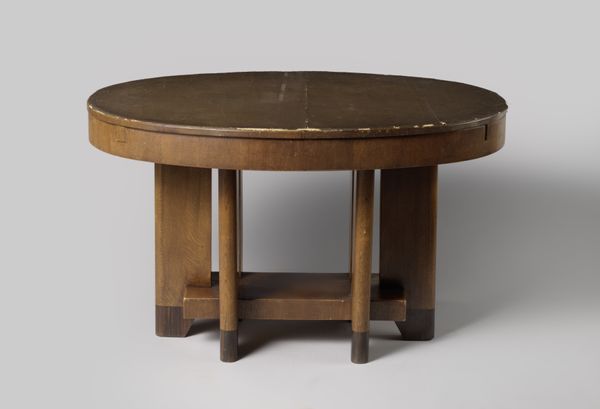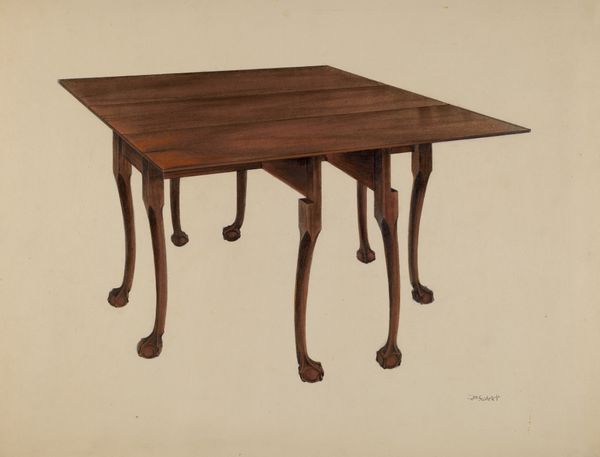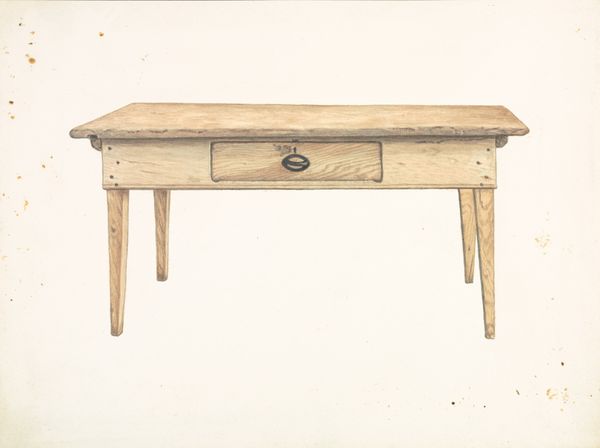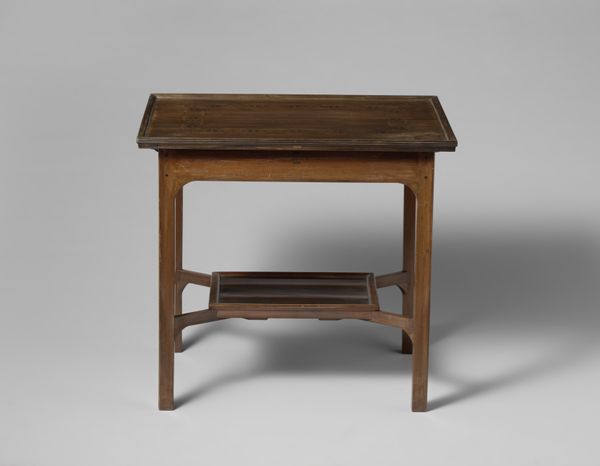
drawing, pencil
#
drawing
#
charcoal drawing
#
oil painting
#
pencil
#
watercolor
#
realism
Dimensions: overall: 27.5 x 35.3 cm (10 13/16 x 13 7/8 in.) Original IAD Object: 66" long; 30" high; 29" wide
Copyright: National Gallery of Art: CC0 1.0
Curator: The piece before us is a watercolor and pencil drawing entitled "Shaker Kitchen Table," created around 1936 by Ray Holden. It offers a straightforward, almost technical rendering of the piece of furniture. Editor: My immediate impression is one of serene simplicity. The delicate lines and the subtle gradations of color in the wood give it a quiet, almost contemplative quality. Curator: That aligns with Shaker design principles: utility, honesty, and lack of ornamentation. Shaker communities aimed to create objects that served their purpose without excess, reflecting their spiritual values in the material world. Holden captures that ethos here. It isn't just a table, it's a statement. Editor: Indeed. The very lack of embellishment draws attention to the beauty of the wood itself. It’s the wood grain, the subtle curve of the legs; it speaks to the beauty of honest labor, the values they placed on functionality reflected the higher power in its utilitarian simplicity. It's more than an item, more like a piece reflecting how religious expression and everyday life are interwoven. Curator: Right, this resonates beyond simple furniture design; the Shaker table symbolizes community values. The placement of the drawers even implies shared space and equal access. Even today, their functional design remains very powerful. It symbolizes their social structure. Editor: Looking at the handles, which are small and round, the very deliberate lack of any carving—all that underscores the message, don't you agree? Like, this table is meant to be used, but its beauty lies precisely in that unadorned quality. Curator: Precisely, these artistic portrayals contributed to public awareness and appreciation of Shaker craftsmanship and values, in their original time, too. By focusing on objects, we gain insight into communal life, religious conviction, and a distinct approach to living. Editor: Looking at this today reminds me of those long, quiet conversations shared around a simple meal—this table embodies history, work ethic, and deep shared cultural memories of times of the early American settlements, expressed through the subtle art of functional design.
Comments
No comments
Be the first to comment and join the conversation on the ultimate creative platform.
